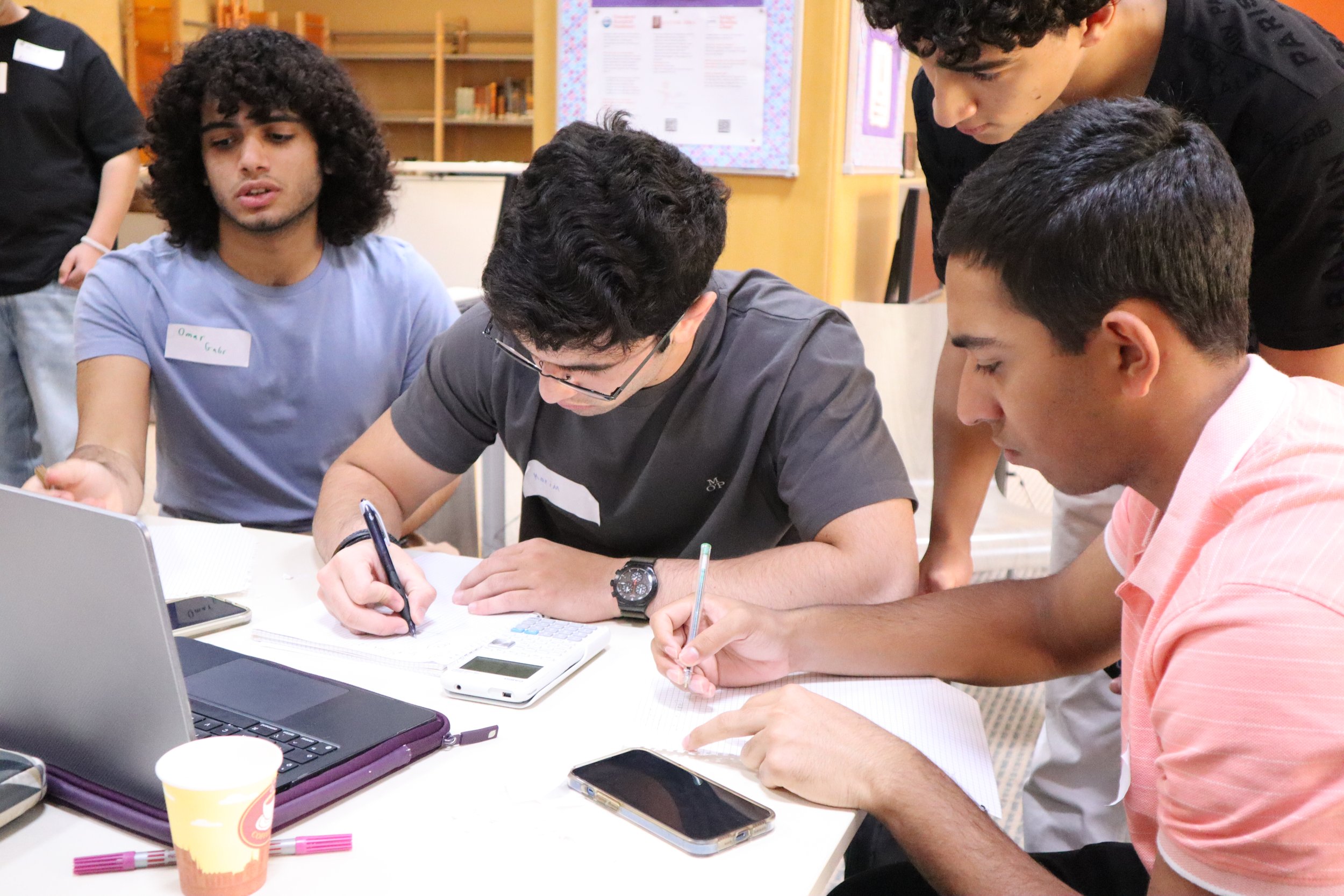The Hayah MRC buzzed with excitement as executive teams from different Model UN organizations in Egypt prepared to convene for the second annual MUNE conference.
MUNE is an organization created by HIAMUN '24's Executive Team to join all Model UNs of Egypt together in efforts to maximize the benefits of all the top conferences together and allow students all over Egypt to benefit from Model UN. The executive teams of those MUN’s are usually the ones representing their schools, sometimes in addition to their MUN directors. MUNE is currently comprised of 13 schools; Hayah International Academy, Alsson, NIS, Gems BISM, Gems TBS, AIS and AIS West, BISC, CES, CAC, CISE, Oasis, and Heritage. All of these participants played an important role in keeping the meeting going and the debates engaging.
This second MUNE conference was led by Hayah’s SG, Aesha Hazem and DSGs, Zeina Abbassi and Hussien El Feky. Hazem had talked about how MUNE was created with the intention of providing a platform for expressing different concerns of the participating schools, and how she hopes that the conference will be a unified common ground that provides a platform from which all the schools could benefit from, especially those with MUN’s that are just starting out.
The conference started, simply, with a game of Jeopardy. This icebreaker brought together people from different schools onto the same teams, where they were high-fiving, chatting amicably, and reassuring each other when they got a question wrong.
Afterwards, the enthusiasm was clear when the executive team asked whether they had wanted to be one of the 6 schools in a new program in accordance with MUNE, as everyone had raised their hand. The participants' roles were to help solve common problems found between MUNs through delegate training programs and other means of improving conference performance.
One of MUNE’s huge achievements this year was how productive the meeting had been. Karim El Dib, the director of HIAMUN, mentioned how this year’s meeting had focused more on implementing the idea of MUNE, rather than introducing the concept as the previous meeting had.
These implementations came in many different forms such as working on a new document containing all the differences in MUN Rules of Procedure between the conferences, the long debates and explanations provided to help give conferences tips on how to manage their budgeting and finances easier, and discussing the differing opinions on the use of artificial intelligence (AI) which helped people to see a different point of view.
At the end of the conference, the members debated about the condemnation of the use of AI by delegates throughout MUN. Some argued about how the use of AI is difficult to detect and, according to Kenzy Louay from Oasis, contains a certain bias that can give delegates “limited perspectives”. Others, such as El Dib, believe that AI is a tool that is available to all, and can be used to help delegates to build more confidence, so why deny them a tool that they might “need to grow”?The conclusion reached in the end seemed to be widely accepted; MUNE conferences needed to help “foster an environment where it's safe” to utilise AI, and at the conferences should additionally outline how AI should be used.
Overall this meeting was a great success, helping to build upon the foundations laid out by the previous meeting, and shaping a better future for MUNs across Egypt. People had come into the conference expecting “the best”, according to Engy Azab, the Heritage SG, and they definitely found that among the new and familiar people they met and talked to throughout the conference.



